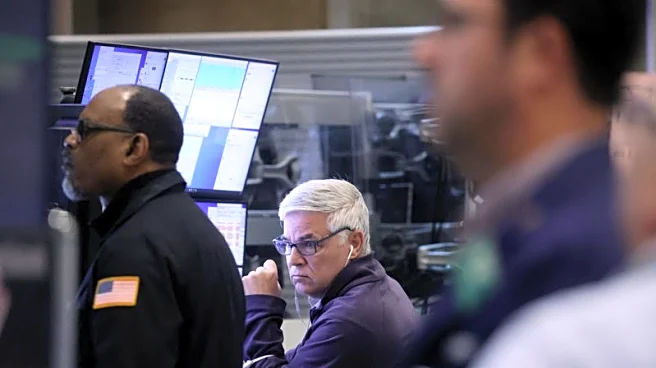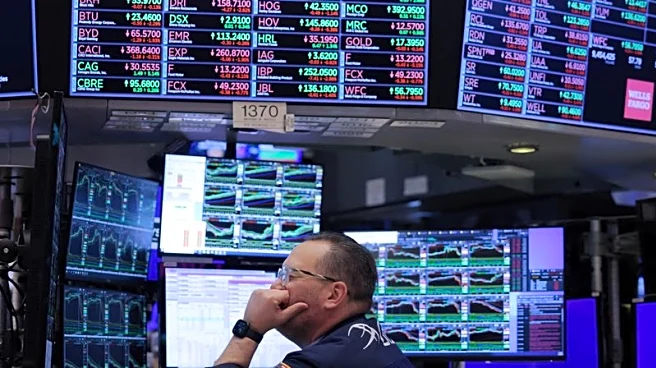What's Happening?
U.S. stocks experienced a decline from record highs in volatile trading on Tuesday, as investors grappled with the absence of economic data due to a government shutdown. The shutdown, now in its seventh day, has resulted from a partisan congressional impasse, leaving investors to rely on secondary data and Federal Reserve officials' remarks for economic insights. A consumer expectations survey from the New York Federal Reserve indicated deteriorating future expectations and rising inflation projections, contributing to market unease. Economically sensitive sectors such as homebuilding, housing, airlines, and transport underperformed, while consumer discretionary stocks saw the steepest declines. Notably, Tesla shares fell 2.2% following the unveiling of its low-cost Model Y, while AMD shares rose 3.6% after a positive stock rating upgrade.
Why It's Important?
The current market volatility highlights the significant impact of the government shutdown on investor confidence and economic forecasting. The lack of federal economic data has forced investors to depend on alternative sources, increasing market uncertainty. This situation underscores the critical role of government data in financial markets and the potential consequences of political gridlock. The Federal Reserve's monetary policy decisions are also under scrutiny, with potential rate cuts being considered to address economic concerns. The performance of key sectors and companies, such as Tesla and AMD, reflects broader market trends and investor sentiment, influencing economic stakeholders and potentially affecting future investment strategies.
What's Next?
As the government shutdown continues, investors will likely remain focused on secondary economic indicators and Federal Reserve communications for guidance. The upcoming Federal Reserve policy meeting will be closely watched for potential rate cut decisions, which could influence market dynamics. Additionally, the resolution of the government shutdown will be critical in restoring access to comprehensive economic data, potentially stabilizing investor sentiment. Market participants will also monitor sector-specific developments, such as technological advancements and consumer trends, to navigate the current economic landscape.












